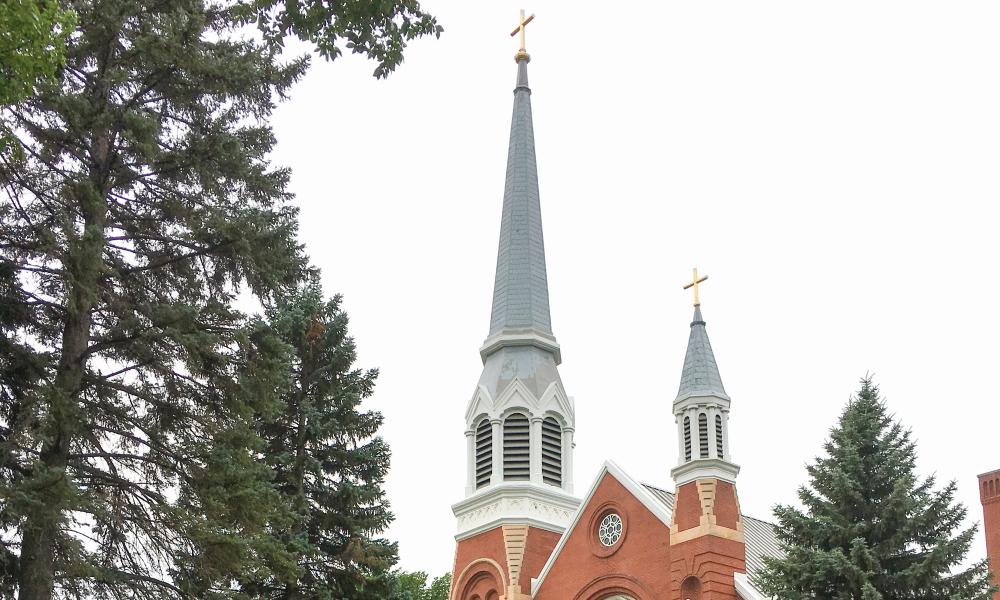
Mass Appeal
Part I
Part I
Ever heard of the 1984 movie Mass Appeal? My guess is you haven’t seen it. I watched it on a VCR, and even purchased a copy. The VCR, you may recall, was how we watched movies at home prior to DVDs and streaming video. A movie about the Church is hardly an appealing subject to many people, especially today. Thirty-five years ago was no different, but for different reasons. However, should you tune in to Mass Appeal (available on Prime Video), you will find it not far out of step with today’s Church. Some things are good about this, and some not so good. One difference between then and now at least as presented in the film: In 1984, Father Farley’s church was full. Today, one is more likely to find a church full of empty pews.
Last summer, I drove again to Wisconsin with my friend Father Dave Janes of Portland. Who wouldn’t want to drive 1,500 miles across Idaho, Montana, North Dakota, Minnesota, and Wisconsin? Dave had some family and church business to attend to in Milwaukee. He was also recovering from an accident, so he was appreciative of a little help.
Heading east, our second stop was Fargo, North Dakota. You’ve heard of it. You’re more likely to have seen the movie by that name than Mass Appeal. However, “Mass appeal” was what I found in Fargo, the see city of that diocese.
We arrived on a Saturday evening and decided to attend the 10 a.m. Sunday liturgy at Fargo’s cathedral, St. Mary. We wondered: “How do they celebrate liturgy here?” After all, what could be more interesting than visiting churches and taking part in liturgies? Doesn’t that excite you? So, Mass in Fargo’s cathedral — what was it like? A first thing to note is that I had attended St. Mary’s the previous summer. At the 8 a.m. Mass on that occasion I found a church full of empty places. The liturgy was celebrated in a dignified manner. The ministers were competent. There was music; but in a scattered congregation, participation was impaired, and the sign of peace was a reach.
We anticipated that 10 a.m. would be the main Mass and upon arriving at 9:45, we found … a church full of empty places. But it was early,. By Mass time, the church was not full, but fuller. There was a full complement of ministers, with those serving in the sanctuary vested in cassock and surplice. The lector read with exceptional pace and clarity. The celebrant did not play the role of a game show host, but was reverent and sincere. Although he failed to introduce the homily with a joke, it was prepared and thoughtful. There was incense. This included incensation of host and chalice at the consecration, a ritual included in the General Instruction of the Roman Missal, (GIRM) but rarely done. This also occasioned a controversy between David and myself.
Me: “They should have incensed at the doxology.”
Dave: “Is that in the Instruction?”
Me: “It should be.”
I checked it out. It isn’t — but it should be. This is the kind of issue that liturgists debate to drive themselves nuts, and to drive people from the Church. Liturgy is prayer, not performance. But you have to do something. And if you do something, do it well. You can attend Mass as a pew potato or with full, active and conscious participation. Mass doesn’t last longer, it’s just more filling. And here is where I give credit to the liturgy at St. Mary. It was done well. But what made all the difference was critical mass. Enough people were there and in the mode of full, active, and conscious participation to make it a prayerful liturgy. The community had both the numbers and a range of ages, with younger and the usual older folks. Exchanging the sign of peace was not a reach.
I voiced one more complaint to David: the ritual of cleansing the vessels. This is entirely functional, not symbolic, and the provision that allows for the cleansing after Mass should be normative, especially when multiple vessels were used for Communion under both species. (The GIRM backs me on this one, cf. 163, 183.) “But you can use the time for personal meditation,” Dave argued. “Not gonna happen with all that fussing going on at the altar.” According to the GIRM, “When the distribution of Communion is over, if appropriate, the priest and faithful pray quietly for some time.”(88, 164). When is this not appropriate? I say this not only because of the directive, but also because it was precisely at this time of the liturgy that I received a sustaining grace for my life and ministry. Unless we commit ourselves to observance of moments of sacred silence during the liturgy, we will simply expect the celebrant to fast forward (like on the VCR) to the next action. Please, God, let the announcements be brief. Just tell us there are coffee and donuts. There were no C&D at Fargo. However, something did happen after Mass. I noticed a number of people remaining in place — maybe to prolong the post-Communion thanksgiving. But what do I know?
“We’ve worked at this for a long time,” the celebrant told us when we chatted with him in the vestibule. It seems their work is paying off. Such a Mass is appealing.



